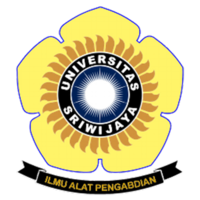Pengendalian Hama dan Gulma Menggunakan Pertanian Terpadu Padi-Itik-Azolla
Abstract
Pests and weeds can reduce plant growth and production. Integrated Rice-duck-azolla farming is biologically controller of pests and weeds in rice plants. The research aims to evaluate the role of ducks and azollas in reducing pest and weed populations of rice plants. The research has been carried out in the irrigated rice fields of Tanah Periuk Village, Muara Beliti District, Musi Rawas Regency from October 2018 to February 2019. The study used experimental method with a randomized block design, consisting of K1= 250 kg urea/ha: without ducks and azolla, K2 = 187.5 kg urea/ha: without ducks: azolla 1000 kg/ha, K3 = 187.5 kg urea/ha: duck 3000/ha: azolla 1000 kg/ha, K4 = 125 kg urea/ha: duck 3000/ha: azolla 1000 kg/ha, K5 = 62.5 kg urea/ha: duck 3000/ha: azolla 1000 kg/ha, K6 = without N: duck 3000/ha: azolla 1000 kg/ha. The application of 3000 ducks/ha and 1000 kg/ha azolla could reduce rice pests and weeds, including Nephotettix virescens 83.33%, Valanga SP 88.70% dan Scirpophaga innotata 83.57%, Fimbristylis dichotoma 84%, Cyperus difformis 91.4%, Ludwigia adscendens 85.7% and Eclipta prostrata 80.8%.
Keywords: azolla, duck, integrated farming, pest
Full Text:
PDFReferences
Cheng, W., Takei, M., Sato, C., Kautsar, V., Sasaku, Y., Sato, S., and Yasuda, H. 2015. Combined use of azolla and loach suppressed paddy weeds and increased organic rice yield : second season results. Journal Wetlands Environmental Management 3(1): 1-13.
Djafaruddin. 2004. Dasar-Dasar Perlindungan Tanaman. Jakarta: Sinar Grafika Offset.
Long, P., Huang, H., Liao, X., Fu, Z., Zheng, H., Chen, A., and Chen, C. 2013. Mechanism and capacities of reducing ecological cost through rice-duck cultivation. Journal of the Science of Food and Agriculture 93(12) : 2881-2891. Https://doi.org /10. 1002/jsfa. 6223
Mandavi, K., Singh, S. P., Dubey, A., Chaudhary, M., and Dixit, R. 2016. Relative efficiency of rice-fish-duck production under integrated and conventional farming systems. The Asian Journal of Animal, 11(1), 49-52.
Manjunatha., Shivmurthy., Sunil, A., Satyareddi., Nagaraj., and Basavesha. 2014. Integrated Farming System An Holistic Approach : A Review. Journal Agriculture and Allied Sciences, 3(4), 30-38.
Manueke, Y., Assa, B. H., dan Pelealu, E. A. 2017. Hama-hama pada tanaman padi sawah (Oryza sativa L) di Kelurahan Makalonsow Kecamatan Tondano Timur Kabupaten Minahasa. Jurnal Eugenia 23(3):120-127.
Mofidian, S., and Sadeghi, S. M. 2015. Evaluation of integrated farming of rice and duck on rice grain yield in gilan, Iran. Journal Acta Universitatis Agriculture Et Silvaculture Mendelianae Brunensis 63(4):1161-1168.
Quan, G., Zhang, J., Yang, J., Chen, R., and Xu, R. 2008. Impacts of integrated rice-duck farming system on rice quality. Journal Acta Ekologica Sinica, 28(7): 3475-3483.
Surahman, M dan Sudrajat. 2009. Sistem pertanian terpadu. Naskah akademis : Pengembangan model ecovillage. Departemen Agronomi dan Hortikultura, Fakultas Pertanian Institut Pertanian Bogor.
Wang, H., Tang, J. J., Xie, J., and Chen, X. 2007. Controlling effects of multiple species coexistence on rice diseases , pests and weeds in paddy field ecosystem. Chinese Journal of Applied Ecology, 18(5):1132-1136.
Widiarta, I. N. dan Suharto, H. 2012. Pengendalian Hama dan Penyakit Tanaman Padi Secara Terpadu. http://bbpadi.litbang.deptan.go.id. Diakses tanggal 15/06/2019.
Yamazaki, M., Yasuda, N., Yamada, T., Ota, K., and Kimura, M. 2004. Comparison of aquatic organisms communities between paddy fields under rice-duck (aigamo) farming and paddy fields under conventional farming. Journal Soil Science and Plant Nutrition 50(3): 375-383. Https://doi.org/10.1080/00380768. 2004. 10408491.
Zheng, Y.M., Ding, Y.F., Wang, Q S., Li, G H., Wu, H., Yuan, Q., Wang, H.Z., and Wang, S.H. 2007. Effect of nitrogen applied before transplanting on nutrient use effeciency in rice. Journal Agric Science China 6 (7):84.
Article Metrics
Abstract view : 977 timesPDF - 3483 times
Refbacks
- There are currently no refbacks.

